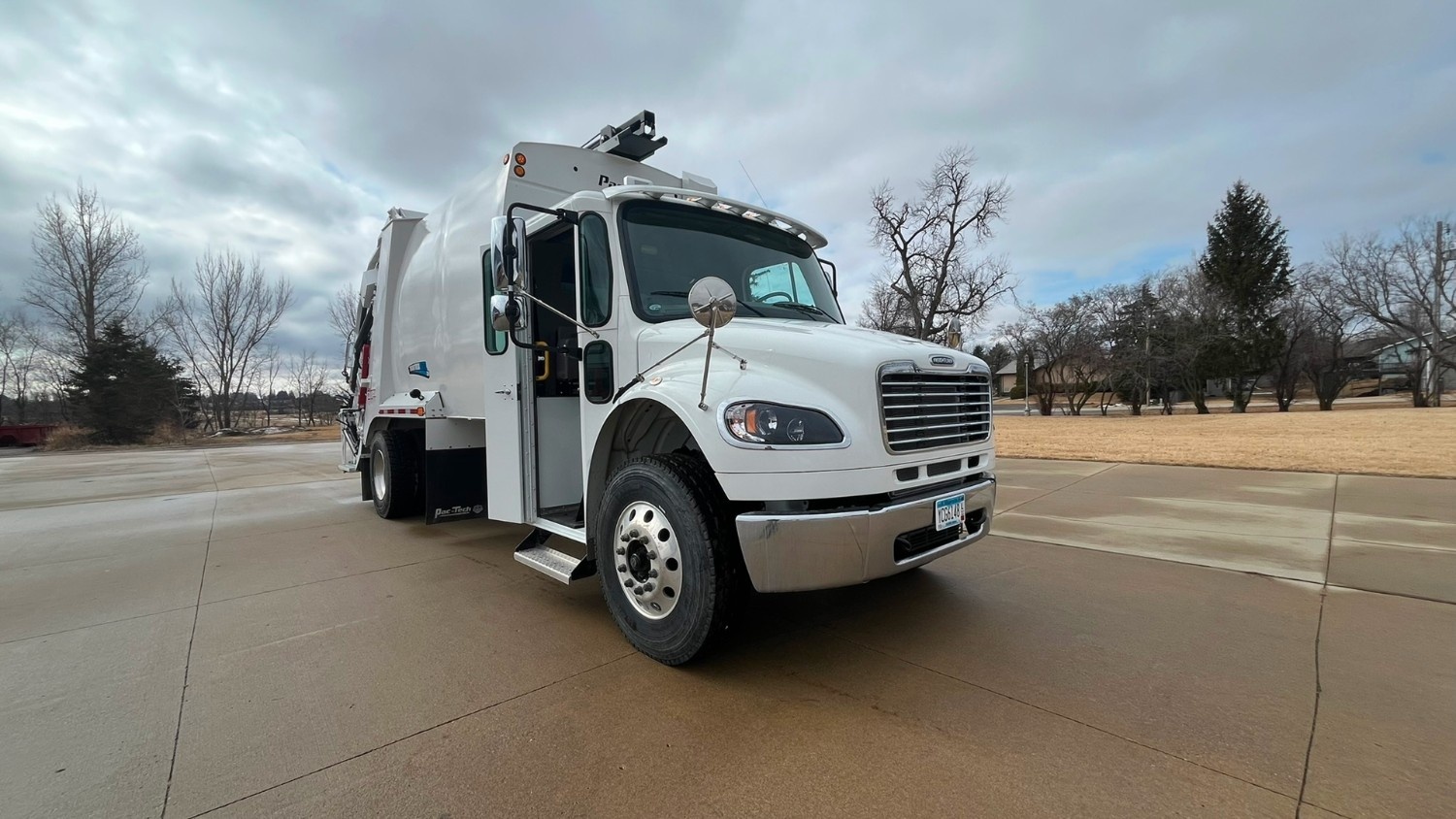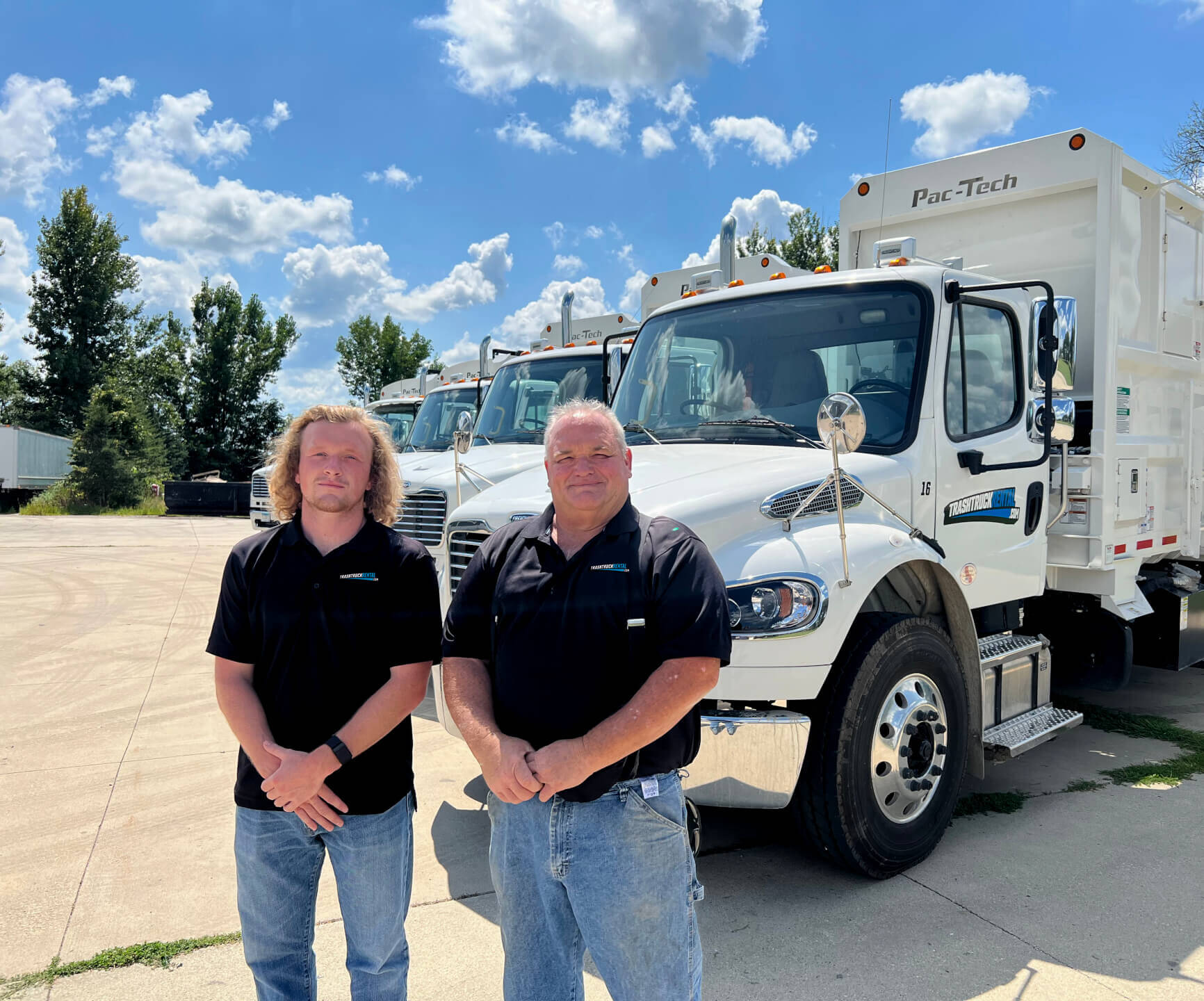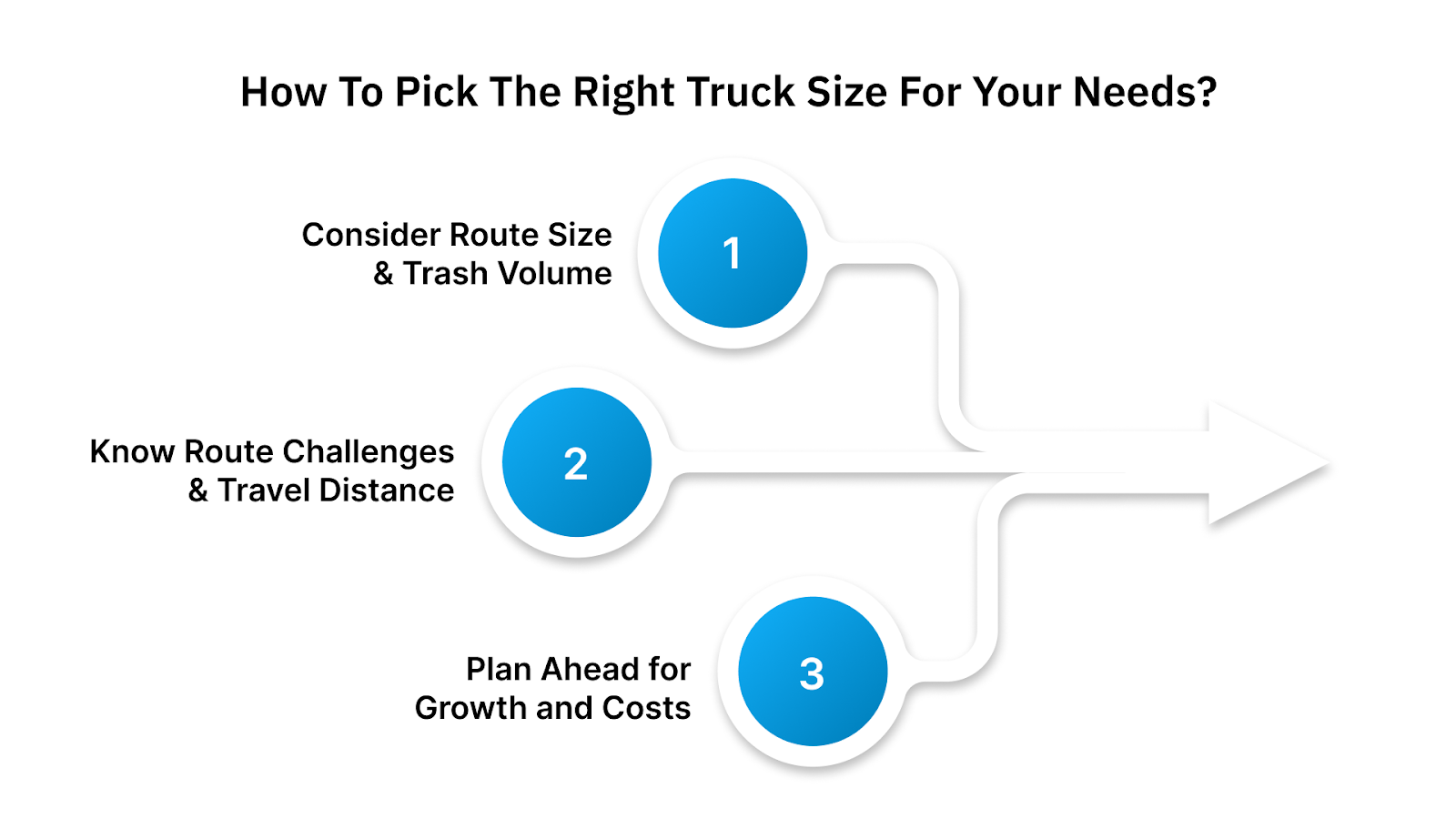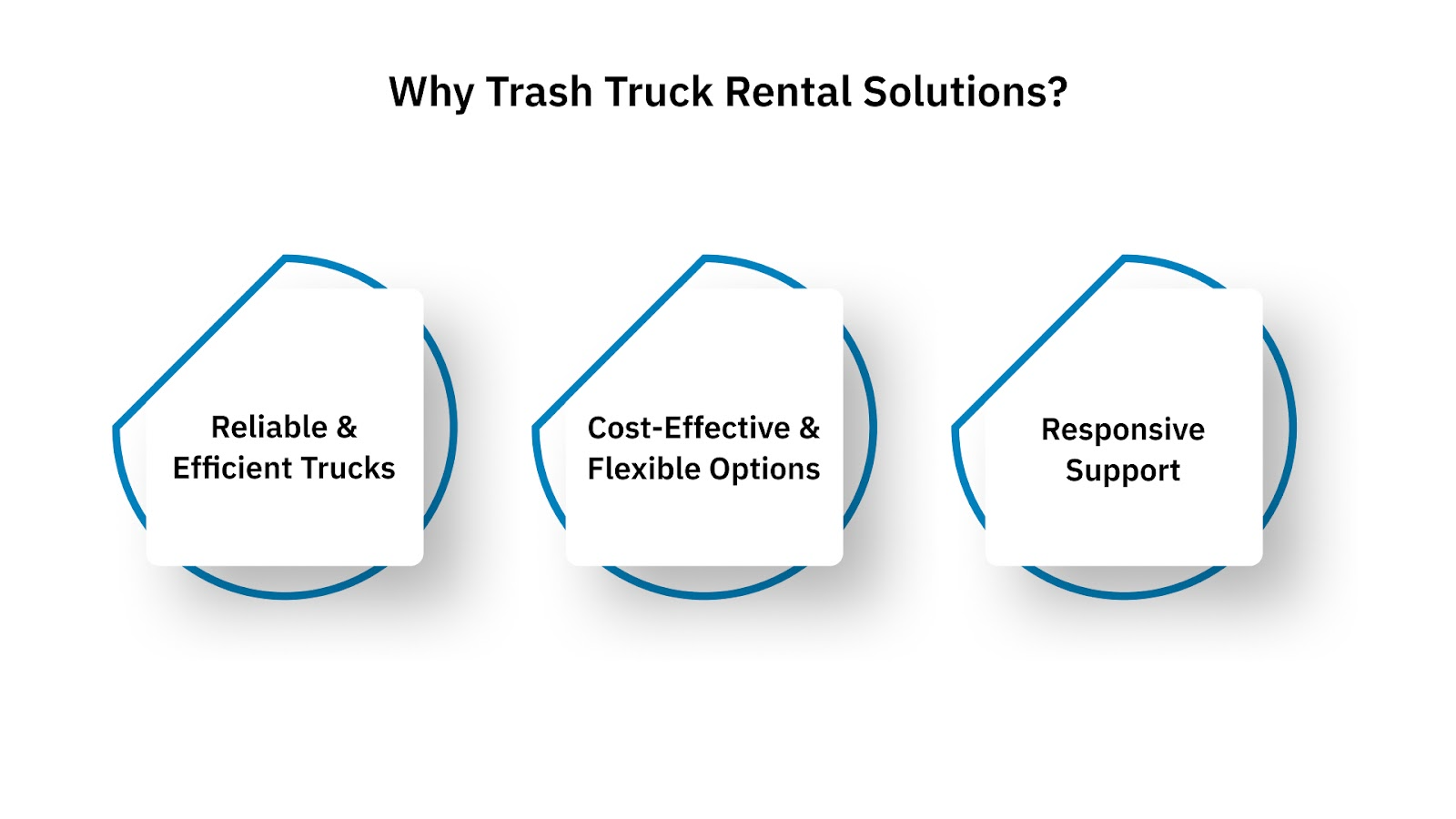How Much Trash Can a Garbage Truck Hold?
Discover how much a garbage truck can hold by volume and weight. Learn about truck types and factors influencing capacity for optimal waste management.

Discover how much a garbage truck can hold by volume and weight. Learn about truck types and factors influencing capacity for optimal waste management.


If you're in the waste hauling business, you know the garbage truck is the backbone of the operation. Every route, every pickup, and every satisfied customer depends on how much a truck can carry.
So, how much trash does a garbage truck hold? The answer varies — different trucks are built for other jobs. But knowing the typical range can help you plan routes, prevent missed stops, and get the most out of your fleet.
This matters because the volume is enormous. According to the EPA, the U.S. generated over 292.4 million tons of municipal solid waste in 2018. That sheer amount of trash highlights just how vital truck capacity is for keeping operations efficient and communities clean.
In this article, we'll break down the average capacity of different garbage trucks and why it matters for your day-to-day operations.
When we talk about how much can a garbage truck hold, we're primarily looking at two key metrics: volume and weight. The volume is measured in cubic yards, representing the physical space available in the truck's container. The weight capacity, however, is a hard limit set by road regulations to ensure safety and prevent damage to infrastructure.
For example, a typical front loader can hold a massive 30 to 40 cubic yards of volume. Thanks to a powerful compaction system, this can translate to carrying over 15 tons (or 30,000 pounds) of compacted waste per trip. This dual measurement is crucial to consider when planning routes, as a truck may reach its weight limit before its volume capacity is full, especially with very dense materials.
The capacity of a garbage truck largely depends on its design, which dictates how it collects and compacts waste. Here’s a breakdown of the types you'll find, summarized in a table for easy comparison:
Now that we’ve looked at the main types of garbage trucks and their sizes, let’s explore what actually affects how much they can carry.

The actual amount of waste a truck can carry on any given day is influenced by several factors beyond its raw specs. Understanding these helps you optimize your fleet's performance.
Understanding the factors that affect garbage truck capacity is only the first step. To truly optimize your operations, you need to apply that knowledge to choose the truck size that best fits your routes, waste types, and long-term goals.
Suggested read: How Much Does it Cost to Rent a Roll-Off Truck?

Picking the right garbage truck isn’t just about size; it’s about saving time, money, and running smooth operations. Here are three things to think about:
If your route generates a lot of waste or serves busy areas, a larger truck can handle more waste and reduce the number of trips. However, if you’re collecting light waste or working in tight spaces, a smaller truck might be more suitable. Also, match the truck to the type of waste; heavy debris may need a lighter load to stay within weight limits.
Tight streets, sharp corners, or low bridges might mean a big truck won’t fit. In such cases, smaller trucks are more effective. But if you’re driving long distances to a landfill, bigger trucks save time and fuel by making fewer trips.
If your area is experiencing growth, acquiring a truck with more space now can help avoid future upgrades. Bigger trucks also save on labor because you’ll need fewer people and trips. Don’t forget to check compaction power and legal weight limits; those affect cost, safety, and compliance.
Once you’ve determined the right truck size for your route, the next step is to find a provider that can deliver dependable, cost-effective solutions without the long-term burden of ownership. That’s where Trash Truck Rental stands out.
Also read: Best Garbage Trucks for Short-Term Rental in 2025

As a decision-maker, whether you're a fleet manager, operations director, CEO, or COO, you know that an efficient fleet is key to your success. But maintaining that fleet can be a constant challenge. When you need a dependable, cost-effective solution for your waste management or municipal needs, we have you covered.
We serve both municipalities and private waste management businesses with trustworthy, community-focused service. Our practical rental and purchase solutions are designed to meet your specific needs, ensuring your fleet remains ready without the burden of ownership.
We serve Minnesota, Wisconsin, and Iowa, and also provide truck sales nationwide. Our focus is on helping fleets stay reliable with dependable trucks and responsive support. Browse our inventory to find the right fit for your operation.
So, how much can a garbage truck hold? It's a complex question with a simple answer: a lot. By understanding the key metrics of cubic yards and pounds, the various types of trucks, and the factors that impact capacity, you can make more informed decisions for your fleet.
Whether you’re managing tight urban routes or wide rural areas, choosing the right truck size is key to efficiency and reliable service. At Trash Truck Rental, we’re here to help you find the best fit for your operation and keep your fleet running smoothly. If you’d like to explore options, contact us or request a quote today.
A. Capacity is measured in both cubic yards (volume) and pounds (weight). While volume indicates the amount of space a truck has, the legal weight limit is often the most critical factor. Trucks can reach their weight limit before they are physically full, especially when hauling dense materials.
A. To pick the right truck, you should consider three things: route density and waste volume (busy urban routes may require smaller, more maneuverable trucks), access limitations such as narrow streets and low bridges, and your budget along with long-term goals for fleet growth and operational costs.
A. A compaction ratio is a performance metric that tells you how much a truck can compress waste. A higher ratio (e.g., 6:1) means the truck can fit significantly more trash into its body, making each trip more efficient and reducing the number of times you have to offload.
A. You can find a variety of reliable and meticulously maintained trucks, including rear loaders, front loaders, and automated side loaders, as well as roll-off trucks for bulk waste. Both short-term rental and long-term purchase options are available.
A. The company's primary service areas are Minnesota, Wisconsin, South Dakota, North Dakota, Nebraska, Kansas, Missouri, Illinois, Indiana, Michigan and Iowa. However, we are open to nationwide sales across all the states of the United States, providing solutions to a broader audience.
Ready to Upgrade Your Process Operations?